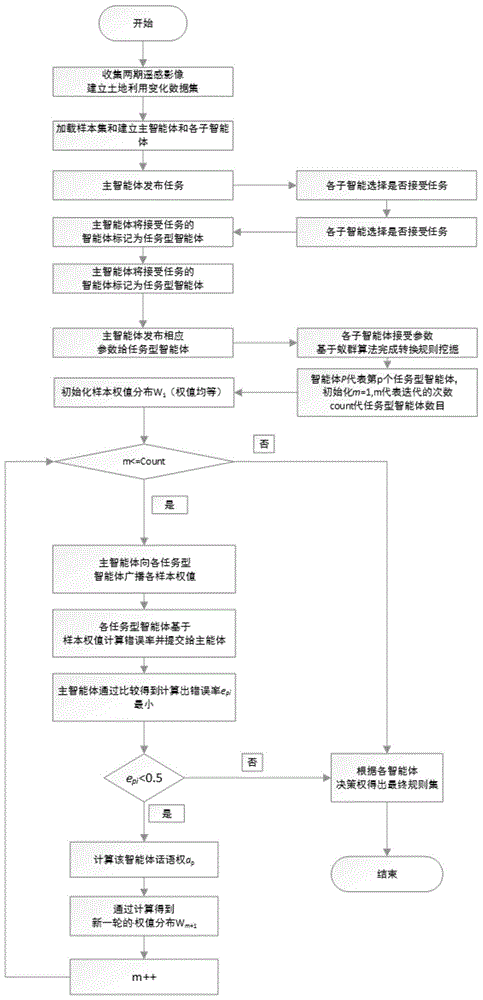Multi-agent and ant colony algorithm-based object-oriented remote sensing classification method
An ant colony algorithm, object-oriented technology, applied in computing, computer components, character and pattern recognition, etc., to achieve the effect of improving accuracy
- Summary
- Abstract
- Description
- Claims
- Application Information
AI Technical Summary
Problems solved by technology
Method used
Image
Examples
Embodiment Construction
[0027] The present invention will be further described below in conjunction with specific examples and accompanying drawings.
[0028] The invention provides an object-oriented remote sensing classification method based on multi-agent and ant colony algorithm, such as figure 1 As shown, it includes the following steps:
[0029] S1. Construction of sample data sets: collect remote sensing image data of at least two phases of the study area, and conduct data vectorization based on the remote sensing image data, produce urban land use classification data, and construct land use change sample data sets.
[0030] S2. Initialize the main agent and the sub-agent, and the main agent releases the task of mining land use change transformation rules.
[0031] S3. Several sub-agents choose whether to accept the task of the main agent according to their own capabilities, and return corresponding messages to the main agent. Among them, the main consideration of its own ability is whether ...
PUM
 Login to View More
Login to View More Abstract
Description
Claims
Application Information
 Login to View More
Login to View More - R&D
- Intellectual Property
- Life Sciences
- Materials
- Tech Scout
- Unparalleled Data Quality
- Higher Quality Content
- 60% Fewer Hallucinations
Browse by: Latest US Patents, China's latest patents, Technical Efficacy Thesaurus, Application Domain, Technology Topic, Popular Technical Reports.
© 2025 PatSnap. All rights reserved.Legal|Privacy policy|Modern Slavery Act Transparency Statement|Sitemap|About US| Contact US: help@patsnap.com



